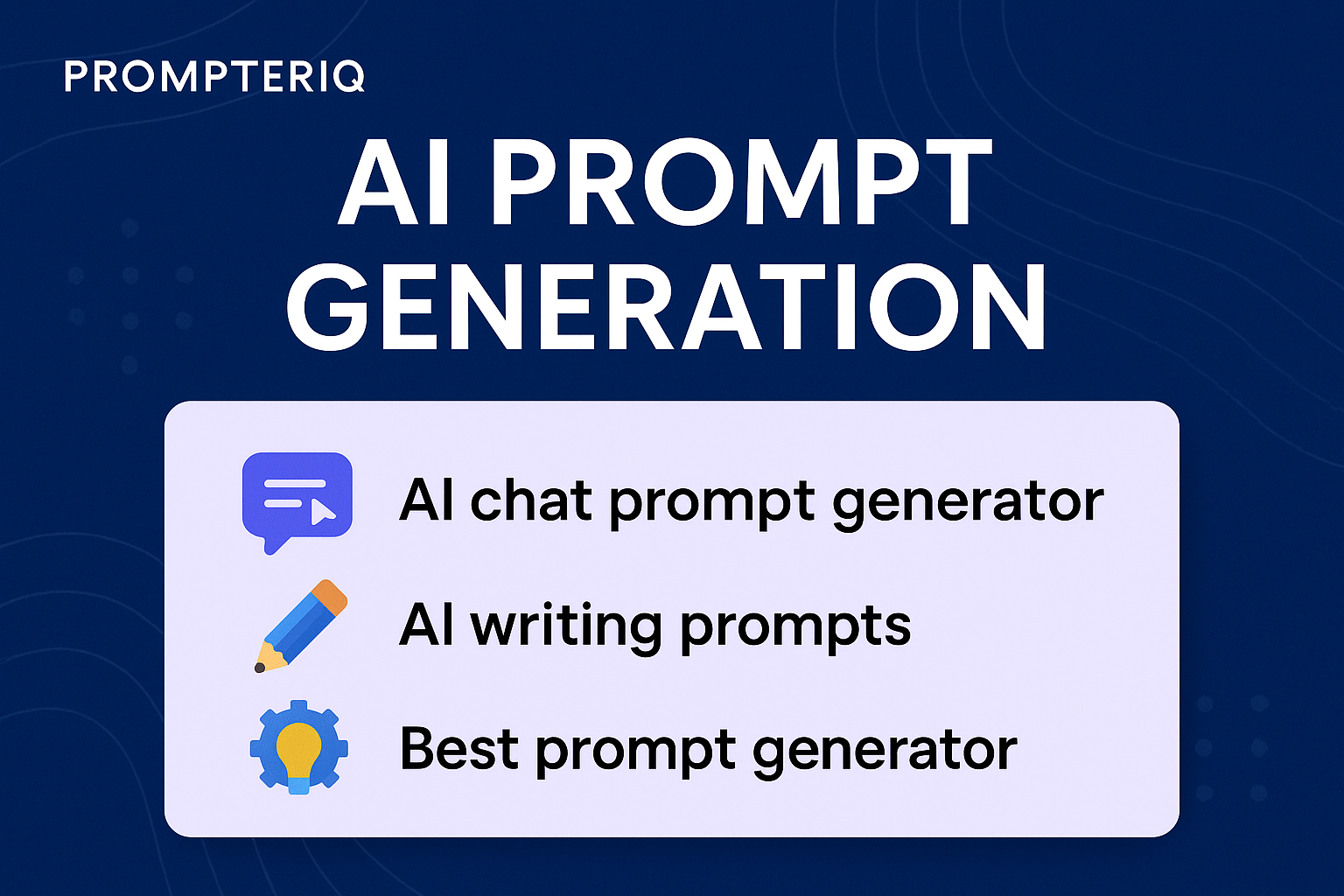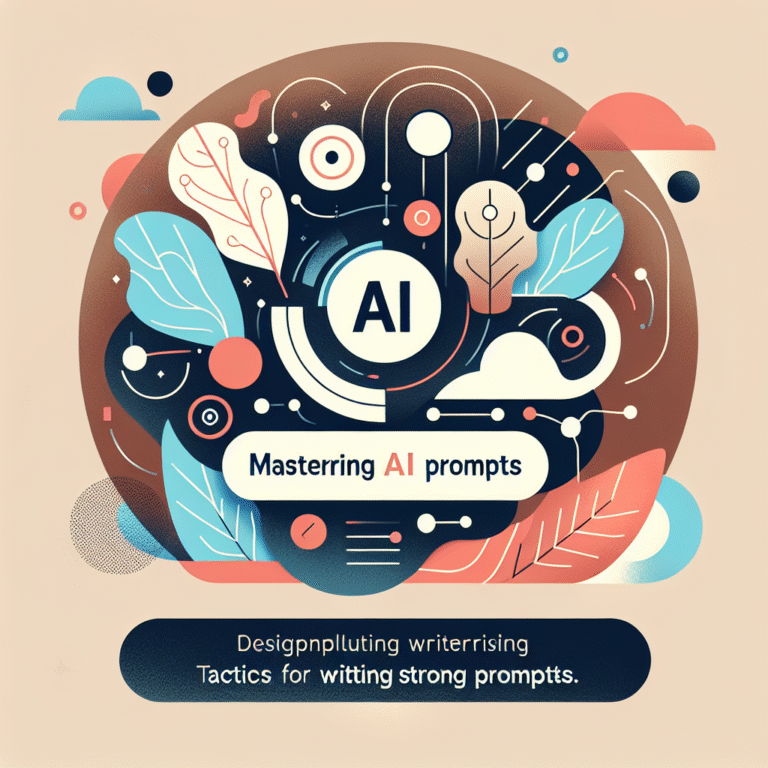AI Prompt Generation: Mastering the Art of Talking to AI for Better Results
Let’s face it, using AI effectively starts with one thing: the prompt. Whether you’re writing a story, generating images, coding, or managing a business with automation tools, how you talk to AI determines what you get out of it. That’s where AI prompt generation comes in. And no, you don’t need to be a tech wizard to master it. It’s a skill anyone can learn—and once you do, it feels like unlocking a superpower.
Think of AI as an incredibly smart assistant that follows instructions. The challenge? It doesn’t read minds. That means how you phrase your prompt—the words, the structure, the details—can make all the difference between a brilliant response and a bland one. In this guide, we’ll break down everything you need to know about AI prompt generation: what it is, why it matters, how to improve it, and which tools can make your life easier.
Along the way, we’ll explore tools like AI prompt builders, AI chat prompt generators, and other prompt tools that help you craft smarter inputs. We’ll look at practical examples, share expert-level prompting tips, and show you how to get consistently better results—whether you’re writing, designing, coding, or creating content.

What Is AI Prompt Generation?
At its core, AI prompt generation is the practice of creating clear, well-structured inputs that guide an AI model’s response. When you type a question into ChatGPT or ask an image generator to create artwork, you’re writing a prompt. That short piece of text acts as your command to the AI, telling it what you want.
But there’s more to it than just writing a sentence. Good prompt generation involves thinking like a designer, strategist, and communicator all at once. You’re not just tossing in a request—you’re setting context, defining goals, and outlining expectations. The more precise your prompt, the more useful your result.
For example, instead of saying “write me a blog,” a better prompt would be, “Write a 1,000-word blog post about eco-friendly home design trends in 2025, written in a friendly and informative tone.” See the difference? The second one gives the AI something to work with: topic, tone, length, and purpose.
This is where AI prompt builders and prompt assistance tools come into play. These platforms help structure prompts by asking guiding questions or offering templates based on your goal. The result? Smarter, more consistent communication with your AI assistant.
Why Prompt Quality Matters More Than You Think
You’ve probably experienced it yourself: you give the AI a simple question and get a weak answer. That doesn’t mean the AI isn’t powerful—it just means your input didn’t give it enough to work with.
This is why prompt engineering is becoming one of the most important skills in the world of artificial intelligence. It’s the difference between “good enough” and “wow, that’s exactly what I needed.” Think of your prompt as the blueprint for your AI’s performance. The clearer the blueprint, the better the build.
In fact, many businesses are hiring prompt writers—specialists who know how to craft detailed, context-rich queries that unlock the full potential of AI tools. These pros often use advanced tools like chat prompt optimizers or prompt crafting platforms to streamline and standardize their workflows.
If you’re a content creator, software engineer, marketer, or designer, this skill can dramatically increase your efficiency. And if you’re a beginner, don’t worry—there are plenty of free prompt generators and guides to help you get started.
Real-World Use Cases of Prompting
So where does all this prompting actually come into play? Pretty much everywhere. Here are some real-world examples of how people are using AI prompt generation across industries:
- Writers & Bloggers: Prompt-based idea generation, story planning, and outline creation using AI writing prompts.
- Marketing Teams: Writing email sequences, ad copy, product descriptions, and landing page content with assistance from prompt generator tools.
- Designers & Artists: Using AI art prompt helpers to guide the aesthetic, theme, and style of visuals generated by tools like Midjourney and DALL·E.
- Developers: Using AI coding prompt tools to debug code, explain functions, or generate code snippets across multiple languages.
- Educators & Students: Crafting educational content, lesson plans, flashcards, and quiz material with text prompt tools.
What unites these use cases is the ability to turn a good idea into a great execution—all by learning how to talk to AI in the right way.
How to Make a Prompt That Actually Works
Let’s get practical: how do you actually write a good AI prompt? While there’s no one-size-fits-all format, the following framework works in almost every situation:
- Start with Context: Tell the AI what role it’s playing (e.g., “You are a copywriting assistant…”)
- Give Specific Instructions: What should it do? Include action verbs like write, list, generate, explain.
- Define the Output: Ask for a format (e.g., bullet list, paragraph, code block) or tone (e.g., friendly, academic).
- Add Constraints: Include word limits, required keywords, or structural rules.
Here’s an example in action:
“You are a travel blogger assistant. Write a 300-word paragraph about must-see places in Iceland during winter, written in an engaging and adventurous tone. Include at least three locations.”
That prompt is packed with direction. And it’s far more likely to get you something usable than just typing “Write about Iceland.”
If that feels overwhelming, tools like prompt generators or AI prompt building assistants can guide you through the process step-by-step. Many now offer drag-and-drop builders, prompt banks, or examples you can remix.
Tips to Improve Your Prompting Skills Over Time
Great prompting isn’t something you’re born with—it’s something you learn through experimentation. But there are a few proven strategies to get better faster:
- Review Examples: Spend time reading high-performing prompts from prompt libraries or communities.
- Keep a Prompt Journal: Track what works and what doesn’t. Over time, you’ll see patterns emerge.
- Ask for Feedback: Many AIs can actually critique your prompt and suggest improvements.
- Use Templates: Start with pre-built structures and customize them as you grow more confident.
- Mix and Match: Combine prompt strategies from different domains (e.g., use narrative-style prompts in business tasks).
Also, remember that clarity beats cleverness. Don’t overcomplicate your request. Simple, structured prompts almost always outperform abstract or vague ones.
The Rise of Prompt Engineering as a Career
Prompt engineering is becoming a sought-after skill in tech, education, marketing, and beyond. As AI becomes more embedded in daily work, professionals who can guide and optimize AI behavior will become increasingly valuable.
In fact, many companies are already creating job titles like “AI Prompt Specialist” or “Conversational AI Designer.” These aren’t just content people—they’re strategic thinkers who understand how to translate human goals into machine-understandable instructions.
This shift means that mastering AI prompt generation now could open up exciting career opportunities. And thanks to free AI tools for prompts, anyone can begin learning and experimenting today.
Why Prompting Is the New Literacy
In the past, computer literacy meant knowing how to use software. In the AI era, it means knowing how to ask questions in a way machines understand. Prompting is the new literacy. It’s how we shape the behavior of intelligent systems.
And the best part? You don’t need to code. You don’t need to be technical. You just need to think clearly, communicate directly, and understand a bit about how AI works. The rest, you’ll learn by doing.
Platforms like PrompterIQ make this easier than ever. With built-in templates, dynamic suggestions, and smart optimization, you’re not just generating prompts—you’re learning how to think in prompts. It’s like Google for prompt generation, but better.
Final Thoughts: Build Your Prompting Muscle
We’re just scratching the surface of what’s possible with AI prompt generation. As the tools get smarter and the models get more advanced, the human side of the equation—your ability to craft effective prompts—will only become more important.
Whether you’re writing, designing, coding, or building a business, prompts are your creative engine. Learn how to write them well, and everything gets easier.
So here’s your challenge: start small. Try writing three prompts a day for different purposes. Track your results. Tweak your inputs. And explore platforms like PrompterIQ to give you that extra edge.
The better you are at prompting, the better your AI becomes at helping you. Ready to become a prompt master? Let’s build something amazing—one prompt at a time.





